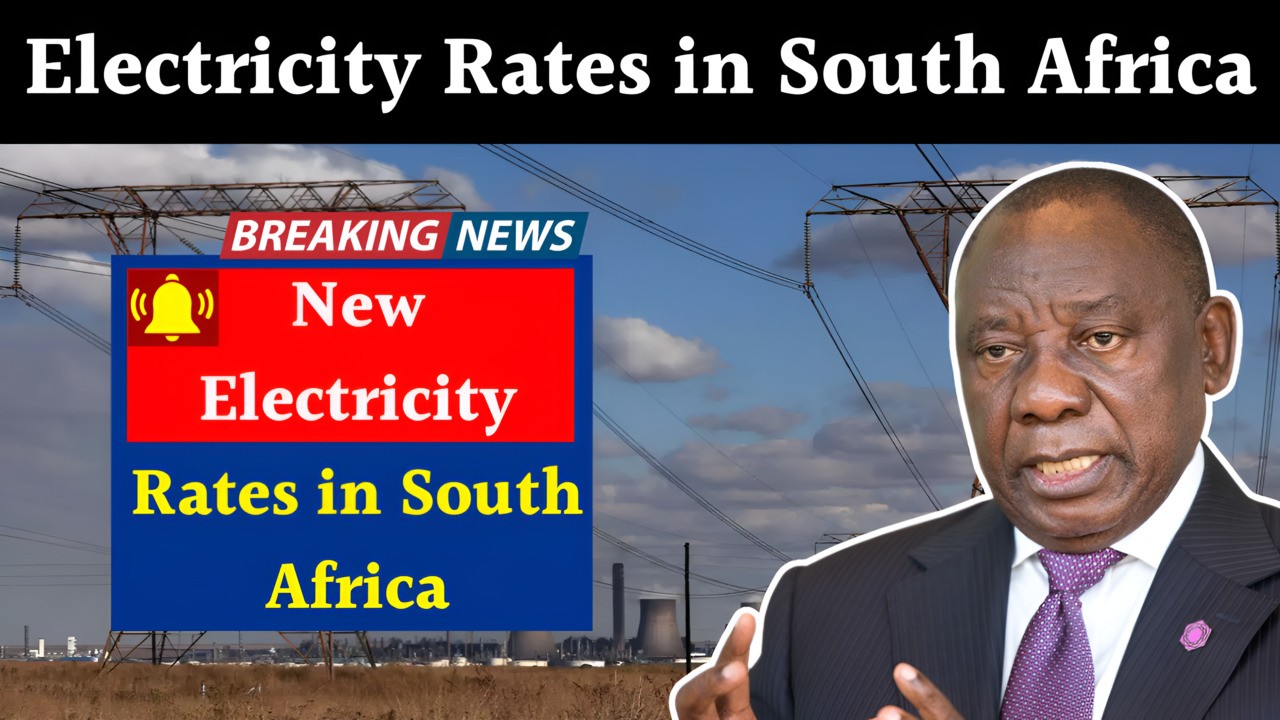New Electricity Rates in South Africa 2025: South Africa’s electricity tariffs are set to rise in 2025, affecting households and businesses across the country. The National Energy Regulator of South Africa (NERSA) has approved a 12.7% tariff increase for Eskom, the state-owned power utility, effective from April 1, 2025. This decision comes after Eskom initially requested a much higher increase, citing financial challenges. While the approved hike is lower than Eskom’s original proposal, it will still have a major impact on consumers and the overall economy.
Reasons Behind the Tariff Increase
Eskom originally applied for a 36% increase in electricity tariffs for the 2025/26 financial year. The utility argued that previous regulatory decisions had left it with significant financial shortfalls. However, after careful review, NERSA approved a lower increase of 12.7%. This decision aims to balance Eskom’s financial needs with the economic realities faced by South Africans.
How the Tariff Hike Affects Consumers
The electricity price increase will put more strain on household budgets, particularly for low- and middle-income families. As the cost of electricity rises, many consumers may need to reduce their energy consumption to keep their bills manageable. Higher electricity prices could also lead to increased costs for basic goods and services, as businesses pass on their rising expenses to consumers.
Impact on Businesses and Industries
For businesses, especially those that rely heavily on electricity, the tariff increase poses challenges. Industries such as manufacturing, mining, and retail may see higher operational costs, which could reduce their profitability. Small and medium-sized enterprises (SMEs) may struggle the most, as they have fewer resources to absorb these rising costs. Many businesses are now considering energy-efficient technologies and alternative energy sources to reduce their electricity bills.
Growing Interest in Alternative Energy Sources
With electricity prices increasing, more South Africans are exploring alternative energy options. One of the most promising solutions is liquefied petroleum gas (LPG), which has become a popular choice for both households and businesses looking to cut costs. The LPG market in South Africa is expected to expand significantly as consumers look for more reliable and affordable energy alternatives. In addition, solar power and backup generators are also gaining popularity as businesses and homeowners try to reduce their dependence on Eskom’s grid.
Political and Regulatory Reactions
The electricity tariff increase has faced criticism from opposition parties, particularly the Democratic Alliance (DA). The DA has voiced concerns that the higher tariffs will place an unnecessary burden on consumers and businesses. They have called for more accountability and efficiency in Eskom’s operations, urging the government to implement long-term solutions to address the country’s ongoing energy crisis.
What Lies Ahead for Eskom and Electricity Prices?
Eskom’s financial situation remains a key issue that will influence future electricity prices. If the utility cannot manage its debt and operational challenges effectively, South Africans may face further tariff increases in the coming years. Consumers and businesses should stay informed about regulatory decisions and consider energy-saving strategies to manage their electricity costs.
Final Thoughts
The 12.7% tariff increase for 2025 is a significant development in South Africa’s energy sector. While it is lower than Eskom’s initial request, it still raises concerns about affordability and economic impact. The rising electricity costs highlight the need for alternative energy solutions and greater efficiency within Eskom. By staying informed and adopting energy-saving measures, South Africans can better navigate the challenges of an evolving energy landscape.




